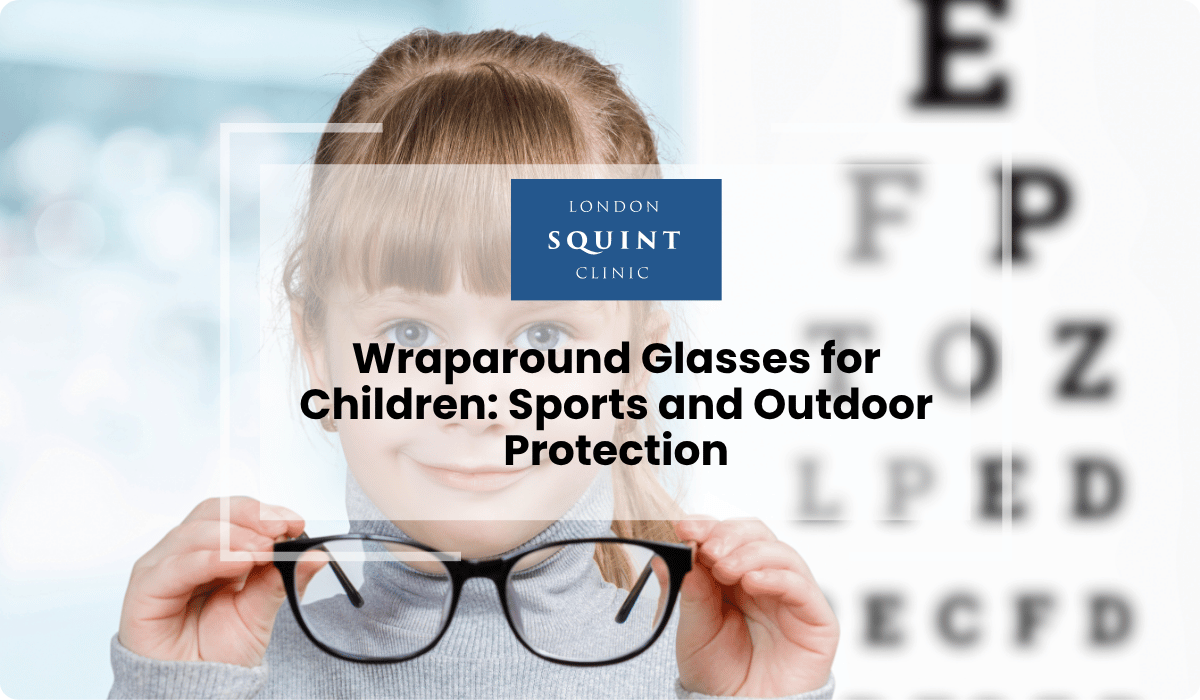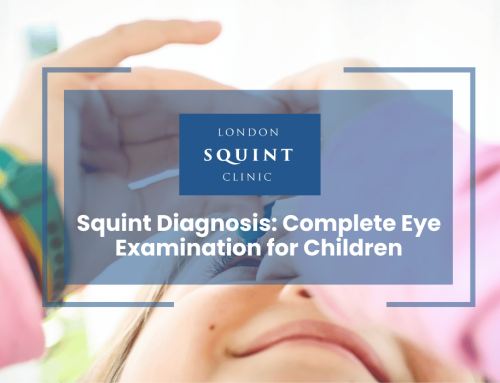Wraparound Glasses for Children: Sports and Outdoor Protection
Essential Insights: Protecting Young Eyes During Active Play
- Children’s eyes are more vulnerable to UV damage, absorbing up to 70% more radiation than adults while spending approximately 1,000 more hours outdoors annually.
- Wraparound glasses provide superior protection through curved designs that shield from frontal and peripheral hazards, with polycarbonate lenses offering 10x greater impact resistance than standard lenses.
- Sports eyewear is essential for high-impact activities (racquet/ball sports), water/snow sports, and everyday activities like cycling—with 40% of childhood eye injuries occurring during recreational activities.
- When selecting wraparound glasses, consider activity-specific features (impact ratings for ball sports, anti-fog for water activities, photochromic for cycling) and ensure proper fit with adjustable components.
- Proper maintenance through regular cleaning, appropriate storage in hard cases, and routine inspection ensures long-lasting protection and represents a valuable investment in children’s ocular health.
Table of Contents
- Why Children Need Specialized Eye Protection Outdoors
- Understanding Wraparound Glasses: Features and Benefits
- When Should Children Wear Sports Eyewear?
- How Do Wraparound Glasses Protect Against Eye Injuries?
- Choosing the Right Wraparound Glasses for Different Activities
- Ensuring Proper Fit and Comfort for Active Children
- Maintaining and Caring for Children’s Sports Eyewear
Why Children Need Specialized Eye Protection Outdoors
Children’s eyes are particularly vulnerable to environmental hazards and require specialized protection during outdoor activities. Unlike adults, children’s eyes have larger pupils and clearer lenses that allow up to 70% more UV radiation to reach their retinas. This increased exposure occurs during a critical period of ocular development, potentially leading to long-term damage if left unprotected.
Additionally, children spend significantly more time outdoors than most adults—approximately 1,000 more hours annually by some estimates—further increasing their cumulative UV exposure. This heightened exposure during developmental years creates a perfect storm for potential eye damage, including photokeratitis (corneal sunburn), pterygium development, and even early cataract formation in later life.
Beyond UV concerns, children’s active lifestyles present numerous opportunities for eye injuries during sports and recreational activities. According to paediatric ophthalmology data, approximately 40% of all eye injuries in children occur during sports or recreational activities, with many being preventable through proper protective eyewear. Specialized wraparound glasses offer comprehensive protection against both UV radiation and physical hazards, making them an essential part of children’s outdoor safety equipment.
Understanding Wraparound Glasses: Features and Benefits
Wraparound glasses for children feature a distinctive curved design that extends around the sides of the face, providing superior protection compared to standard eyewear. This wraparound configuration offers several critical advantages for active children. The curved frame creates a protective barrier that shields the eyes not only from the front but also from peripheral angles, significantly reducing exposure to UV radiation, wind, dust, and flying debris.
The primary features that distinguish quality wraparound glasses include polycarbonate lenses, which provide impact resistance up to 10 times stronger than regular plastic lenses. These lenses should offer 100% UV protection (blocking both UVA and UVB rays) and ideally include anti-fog coatings for clear vision during active play. Many models also incorporate rubber nose pads and temple tips for secure positioning during movement.
The benefits extend beyond basic protection. Wraparound glasses reduce glare and enhance visual clarity during outdoor activities, potentially improving performance in sports that require precise visual tracking. For children who require vision correction, prescription wraparound glasses can accommodate their visual needs while providing the same protective benefits. This dual functionality eliminates the need to choose between clear vision and eye safety.
Perhaps most importantly, properly fitted wraparound glasses stay in place during vigorous activity, unlike standard glasses that may slip or fall off. This stability ensures continuous protection throughout play, making them an excellent choice for active children who need reliable eye protection without constant adjustment.
When Should Children Wear Sports Eyewear?
Children should wear sports eyewear whenever participating in activities that pose potential risks to their eyes. High-impact sports with fast-moving objects or physical contact necessitate consistent eye protection. These include racquet sports (tennis, badminton, squash), ball sports (cricket, football, basketball), and stick sports (hockey, lacrosse). In these activities, the risk of eye injury from projectiles or accidental contact is significantly elevated.
Water and snow sports represent another category requiring specialized eye protection. Swimming goggles protect against chlorine and waterborne irritants, while wraparound sunglasses for skiing and snowboarding shield against intense UV reflection from snow surfaces, which can be up to 80% higher than normal ground reflection. This protection helps prevent snow blindness, a painful form of photokeratitis.
Everyday outdoor activities also warrant consideration for protective eyewear. Cycling, skateboarding, and scooter riding involve potential hazards from wind, debris, insects, and falls. Even seemingly low-risk activities like playground play can benefit from wraparound glasses, particularly in windy or bright conditions where environmental particles or intense sunlight may affect children’s eyes.
For children who already wear prescription glasses, sports eyewear becomes even more crucial. Standard prescription glasses are not designed to withstand impacts and may shatter upon contact, potentially causing serious eye injuries. Prescription sports glasses or goggles provide the necessary vision correction while incorporating safety features designed specifically for active wear.
How Do Wraparound Glasses Protect Against Eye Injuries?
Wraparound glasses provide comprehensive protection against eye injuries through multiple mechanisms. Their curved design creates a physical barrier that shields the eyes from direct impacts, flying objects, and environmental debris. This wraparound configuration is particularly effective because it eliminates the vulnerable gaps at the sides of traditional eyewear, through which objects or UV rays can reach the eye.
The impact resistance of wraparound glasses stems primarily from their polycarbonate lens construction. Polycarbonate is an exceptionally durable material that can withstand high-velocity impacts without shattering. When a ball, racquet, or other object strikes these lenses, the force is distributed across the lens surface rather than concentrated at the point of impact, significantly reducing the risk of lens breakage and subsequent eye injury.
Beyond physical protection, quality wraparound glasses provide a crucial defence against harmful radiation. The extended frame coverage blocks UV rays from entering from peripheral angles, addressing a significant weakness of standard sunglasses. Studies have shown that up to 45% of UV exposure can occur through the sides when wearing flat-front sunglasses, a vulnerability that wraparound designs effectively eliminate.
For children with existing vision conditions such as amblyopia (lazy eye) or strabismus (squint), protective eyewear serves an additional purpose. It safeguards their better-functioning eye from injury, which is particularly important as damage to their stronger eye could have more significant functional consequences than for children with normal binocular vision.
Choosing the Right Wraparound Glasses for Different Activities
Selecting appropriate wraparound glasses requires consideration of the specific demands of different activities. For high-impact ball sports like cricket or tennis, prioritise frames with high-impact resistance ratings and polycarbonate lenses at least 2mm thick. These should feature secure straps or temple systems that prevent displacement during sudden movements. Look for models that meet safety standards such as ASTM F803 (for racquet sports) or BS EN 166 (for general eye protection).
Water sports demand different specifications. For swimming and water activities, wraparound glasses should feature water-resistant coatings and buoyant materials that float if dropped in water. Anti-fog treatments are particularly important for these environments, as temperature differences between water and air often cause lens fogging. Some models incorporate ventilation systems that reduce condensation while maintaining protection.
For cycling and road sports, consider wraparound glasses with photochromic lenses that automatically adjust to changing light conditions, maintaining optimal visibility regardless of sun position or cloud cover. These glasses should also feature enhanced peripheral vision to maintain awareness of surrounding traffic and obstacles. Polarized lenses offer additional benefits by reducing glare from road surfaces and vehicles.
Winter sports require specialized features including enhanced UV protection (category 3 or 4 lenses) to counter intense reflection from snow surfaces. These wraparound glasses should incorporate insulation properties to prevent fogging in cold conditions and provide sufficient coverage to block wind and snow particles. For children who wear prescription glasses, consider OTG (over-the-glasses) wraparound models or prescription inserts that accommodate their vision needs without compromising protection.
Ensuring Proper Fit and Comfort for Active Children
Proper fit is paramount when selecting wraparound glasses for children, as ill-fitting eyewear may provide inadequate protection or become a distraction during activity. The bridge of the glasses should rest comfortably on the nose without sliding, while the temples should extend straight back to the ears without pressing against the sides of the head. For optimal protection, the frame should follow the contour of the face with minimal gaps, particularly at the temples and cheekbones.
Adjustable features significantly enhance the fit of children’s sports eyewear. Look for models with adjustable nose pads that can be customized to different nose bridges and adjustable temple arms that accommodate various head widths. Some advanced models offer interchangeable bridge sizes or temple lengths, allowing the glasses to grow with the child and ensuring consistent protection throughout developmental stages.
Weight distribution plays a crucial role in comfort during extended wear. Lightweight materials such as TR-90 nylon or flexible rubberized polymers reduce pressure points and fatigue during long periods of activity. The contact points—particularly the nose pads and temple tips—should feature soft, hypoallergenic materials that prevent irritation even when the child perspires during vigorous play.
For children who resist wearing protective eyewear, involving them in the selection process can significantly improve compliance. Allowing children to choose from appropriate options in their favourite colours or featuring popular designs can transform protective eyewear from an obligation into a desirable accessory. Some manufacturers now offer customizable elements specifically to increase appeal among younger wearers while maintaining all necessary protective properties.
Maintaining and Caring for Children’s Sports Eyewear
Proper maintenance of children’s wraparound glasses ensures longevity and consistent protection. Establish a regular cleaning routine using lukewarm water and mild soap, avoiding harsh chemicals that may damage protective coatings. Rinse thoroughly and dry with a microfibre cloth specifically designated for eyewear to prevent scratches. For on-the-go cleaning, pre-moistened lens wipes designed for polycarbonate lenses offer a convenient alternative.
Storage practices significantly impact the lifespan of sports eyewear. When not in use, wraparound glasses should be stored in a protective case to prevent accidental damage. Hard cases provide superior protection during transport in sports bags or school backpacks. Some specialized cases include ventilation features that allow moisture to evaporate, preventing mould growth after sweaty activities—particularly important for children who may not thoroughly dry their glasses before storage.
Regular inspection is essential for maintaining protective integrity. Check frames for cracks, loose screws, or misalignment, particularly after impacts or falls. Examine lenses for scratches, which can compromise both vision and impact resistance. Most quality wraparound glasses include repair kits with replacement nose pads and screws for minor maintenance. For prescription wraparound glasses, schedule annual reviews to ensure the prescription remains current as the child’s vision develops.
Teaching children responsibility for their eyewear establishes valuable habits. Create a designated “home” for glasses when not in use and incorporate eyewear checks into pre-activity routines. For younger children, consider attaching retention straps to prevent loss during activities. With proper care and maintenance, quality wraparound glasses can provide reliable protection throughout multiple sports seasons, making them a worthwhile investment in children’s ocular health and safety.
Frequently Asked Questions
At what age should children start wearing protective wraparound glasses?
Children should start wearing protective wraparound glasses as soon as they begin participating in outdoor activities or sports, typically around 3-4 years of age. Younger children benefit from early UV protection, as 80% of lifetime UV exposure occurs before age 18. Wraparound styles are available in sizes suitable for toddlers through teens, with adjustable features to accommodate growth.
Can children wear wraparound glasses if they already have prescription glasses?
Yes, children who require vision correction have several options: prescription wraparound sports glasses, contact lenses worn with regular sports eyewear, or OTG (over-the-glasses) wraparound protectors that fit over regular prescription glasses. Prescription inserts for sports frames are also available. Consult with an optometrist to determine the most appropriate solution based on the child’s vision needs and activity level.
How do I know if wraparound glasses provide adequate UV protection?
Quality wraparound glasses should be labeled “100% UV protection” or “UV400,” indicating they block both UVA and UVB rays. Look for certification from recognized standards organizations like ANSI, CE, or AS/NZS. The wraparound design should extend to cover peripheral areas, eliminating gaps where UV rays can enter. Darker lenses don’t necessarily provide better protection—UV protection comes from invisible coatings, not lens tint.
Are wraparound glasses necessary for all outdoor activities or just certain sports?
Wraparound glasses are recommended for all outdoor activities, not just high-impact sports. Even routine outdoor play exposes children to UV radiation and environmental hazards like wind, dust, and debris. The level of protection needed varies by activity—high-impact sports require impact-resistant models with secure fit, while general outdoor activities may use lighter wraparound sunglasses with UV protection. Year-round use provides consistent protection during all outdoor exposure.
How often should children’s wraparound glasses be replaced?
Children’s wraparound glasses should be replaced every 1-2 years, or immediately if they show signs of damage such as cracks, deep scratches, or loose components. Growing children may need more frequent replacements to maintain proper fit. UV protective coatings can deteriorate over time, particularly with frequent exposure to chlorine, salt water, or intense sunlight. Regular inspection of frames and lenses helps determine when replacement is necessary.
What’s the difference between regular sunglasses and sports wraparound glasses for children?
Sports wraparound glasses differ from regular sunglasses in several key ways: they feature curved frames that provide peripheral protection; use impact-resistant polycarbonate lenses rather than standard plastic; incorporate secure-fit features like rubber nose pads and temple grips; and are designed to stay in place during vigorous movement. While regular sunglasses may provide frontal UV protection, they lack the comprehensive coverage and durability needed for active children participating in sports and outdoor activities.
How can I encourage my child to consistently wear their protective eyewear?
Encourage consistent use of protective eyewear by involving children in selecting styles they like, explaining the importance of eye protection in age-appropriate terms, and establishing clear rules about when glasses must be worn. Role modeling helps—wear your own protective eyewear during activities. Praise compliance and consider reward systems for younger children. Ensure proper fit and comfort, as uncomfortable glasses will be resisted. Finally, store glasses in consistent, accessible locations to make wearing them part of regular routines.
Find out if you are suitable for Double Vision Treatment
Not everyone is eligible for double vision surgery.
Find out if you could benefit from this life-changing surgery by taking the quick self-suitability quiz below:
Our most popular procedures

Hello, I’m Nadeem Ali
I’m one of the few eye surgeons in the world with 100% focus on Squint and Double Vision Surgery.
I have 24 years of eye surgery experience, and worked for 13 years as a Consultant at London’s renowned Moorfields Eye Hospital.
In 2023, I left the NHS to focus fully on treating patients from across the world at the London Squint Clinic. You can read more about me here.
There’s lots of information on the website about: squint surgery, double vision surgery and our pricing.
The most rewarding part of my job is hearing patients tell me how squint or double vision surgery has changed their lives. You can hear these stories here.
Mr Nadeem Ali
MA MB BChir MRCOphth FRCSEd(Ophth)





